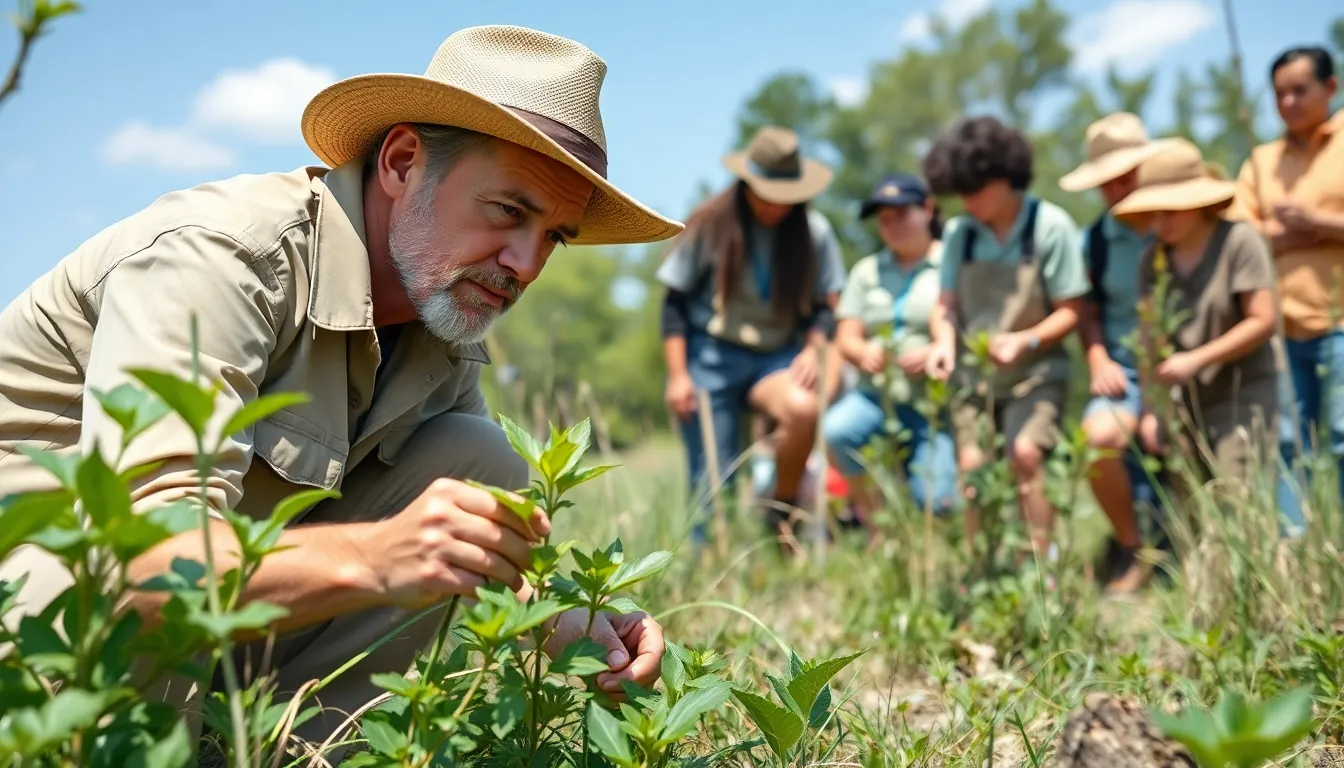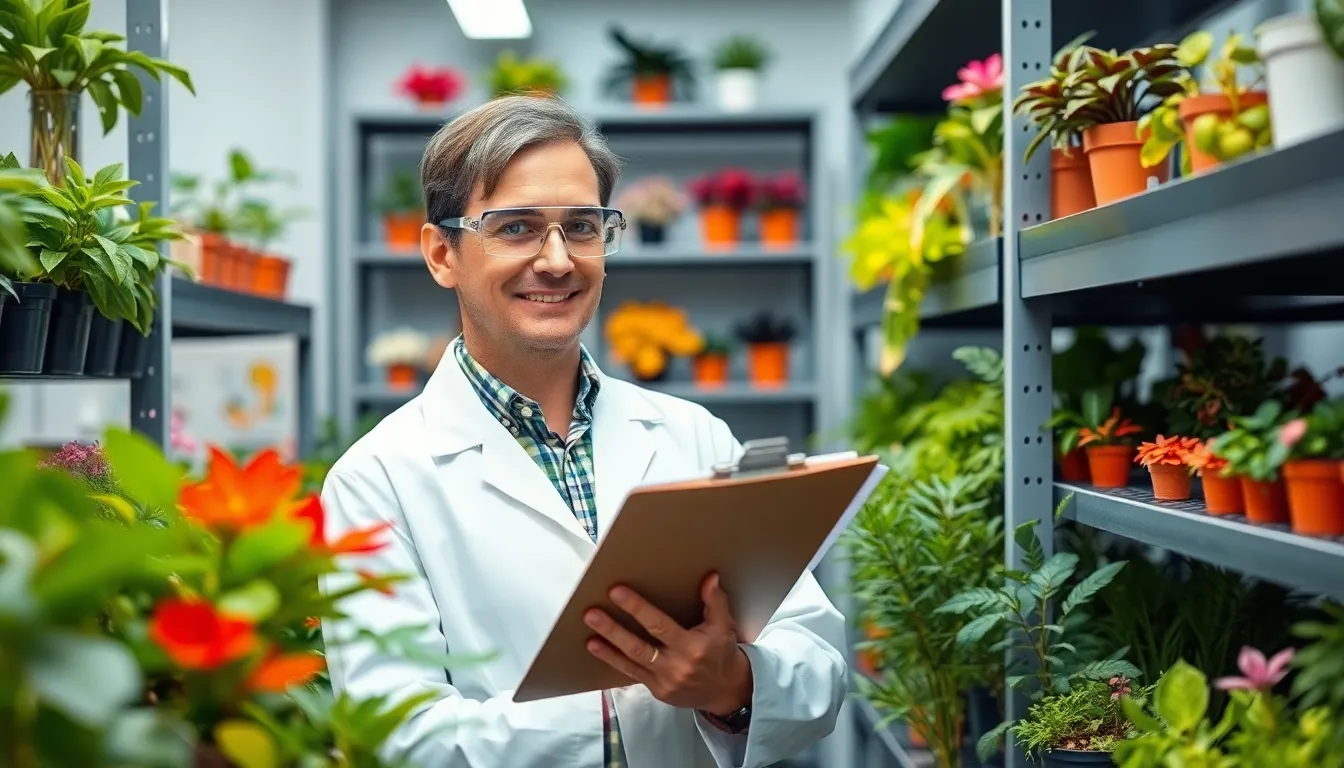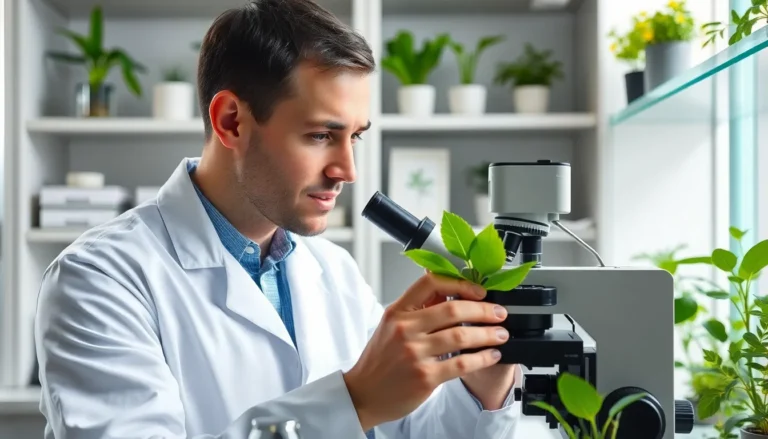In a world where plants are the unsung heroes, botany news is the backstage pass to their leafy lives. From the latest discoveries in plant genetics to groundbreaking research on climate resilience, it’s time to dig deep into the green world that surrounds us. Who knew that your houseplants could hold the key to solving global challenges?
Botany News
Recent studies push the boundaries of botanical research, revealing insights that could transform environmental strategies. Significant advancements in plant genetics emerge as researchers explore climate resilience.
Groundbreaking Research Studies
Current findings highlight the potential of certain plants to absorb more carbon dioxide than previously thought. Researchers at the University of California discovered a species capable of enhanced photosynthesis, which may improve carbon capture efforts. Another critical study from the University of Cambridge identified specific genetic markers linked to drought resistance in crops. Such research paves the way for developing plants better suited for changing climates.
Innovative Plant Breeding Techniques
New plant breeding techniques are revolutionizing agricultural practices. Scientists now use CRISPR technology to create disease-resistant variants of staple crops quickly. Additionally, genome sequencing combined with traditional breeding methods significantly boosts yield potential. Researchers also investigate vertical farming techniques to optimize limited urban spaces for plant cultivation. These advancements directly support sustainable food production amidst growing urban populations.
Conservation Efforts Highlighted in Botany News

Conservation efforts play a vital role in addressing plant species’ decline and promoting biodiversity. Research initiatives focus on protecting endangered species and fostering sustainable agricultural practices.
Protecting Endangered Plant Species
Conservation organizations actively work to preserve endangered plant species. Field studies identify at-risk plants, leading to targeted preservation efforts. Notable programs include habitat restoration projects and seed banking initiatives. The goal remains to safeguard plant diversity and restore ecosystems. Recent successes highlight the revival of previously thought-extinct species through careful cultivation and monitoring. Educating communities about the importance of these plants also helps foster public support for conservation programs. Collaborative research efforts have led to the development of tools and strategies that enhance conservation outcomes.
Sustainable Practices in Agriculture
Sustainable practices in agriculture aim to reduce environmental impact while ensuring food security. Researchers emphasize the importance of soil health and crop rotation techniques to enhance productivity without harming ecosystems. Organic farming methods contribute significantly to sustainability by avoiding synthetic pesticides and fertilizers. Adoption of agroforestry practices creates synergistic relationships between crops and trees, promoting biodiversity. Studies reveal that these practices can increase yields by up to 30% while improving resilience to climate change. Embracing local varieties encourages genetic diversity and adaptability, supporting long-term agricultural sustainability.
Technological Advancements in Botany
Recent technological advancements are enhancing plant research significantly. Innovations in genetics play a crucial role in understanding plant responses to environmental changes and resilience factors. Techniques like CRISPR and genome sequencing improve crop traits such as drought resistance and carbon absorption capabilities. Researchers at the University of California discovered a species demonstrating enhanced photosynthesis, paving the way for future advancements. Notably, this progress aids in developing sustainable agricultural practices that mitigate climate impact.
Climate change increasingly pressures plant life, altering growth patterns and species distribution. Elevated temperatures and changing precipitation patterns challenge many plants’ survival. Some species adapt while others decline, leading to biodiversity loss. Scientists monitor these shifts using advanced remote sensing technologies to track plant health and distribution. With ongoing research, strategies emerge to support conservation efforts and ecosystem resilience amid these challenges. The focus remains on employing genetics and technology to ensure sustainable solutions for a changing world.
Community and Educational Initiatives
Community and educational initiatives focus on expanding knowledge about botany among diverse audiences. These programs engage individuals of all ages, fostering a deeper appreciation for plant life and its significance.
Promoting Botany in Schools
Educational institutions play a critical role in promoting botany. Schools often integrate plant science into their curricula, encouraging hands-on learning through garden projects. Students gain practical experience while developing a sense of responsibility towards the environment. Workshops and field trips frequently provide opportunities to explore local ecosystems, enhancing students’ understanding of biodiversity. Collaborative initiatives between schools and botanical gardens yield valuable resources, bringing expert knowledge directly to the classroom.
Citizen Science Projects in Botany
Community involvement thrives through citizen science projects in botany. These projects empower individuals to participate in real-world research, contributing data that aids scientific understanding of plant species and ecosystems. Volunteers often collect vital information on plant distributions, helping scientists monitor biodiversity and track changes over time. Engaging with local flora fosters a sense of stewardship, as participants develop a connection to their natural surroundings. Successful projects frequently showcase the impact of collective efforts, highlighting the valuable insights gained through community collaboration.
Conclusion
Botany continues to evolve as a vital field in addressing environmental challenges. The integration of innovative technologies and community initiatives is paving the way for a deeper understanding of plant life and its significance. As research advances, the potential for plants to contribute to sustainability grows, offering hope for future conservation efforts and agricultural practices.
Emphasizing education and community involvement ensures that knowledge about botany reaches a wider audience. By fostering a connection to local ecosystems, individuals can play an active role in promoting biodiversity and environmental stewardship. The future of botany holds promise as scientists and communities work together to create resilient ecosystems and sustainable solutions for a changing world.




